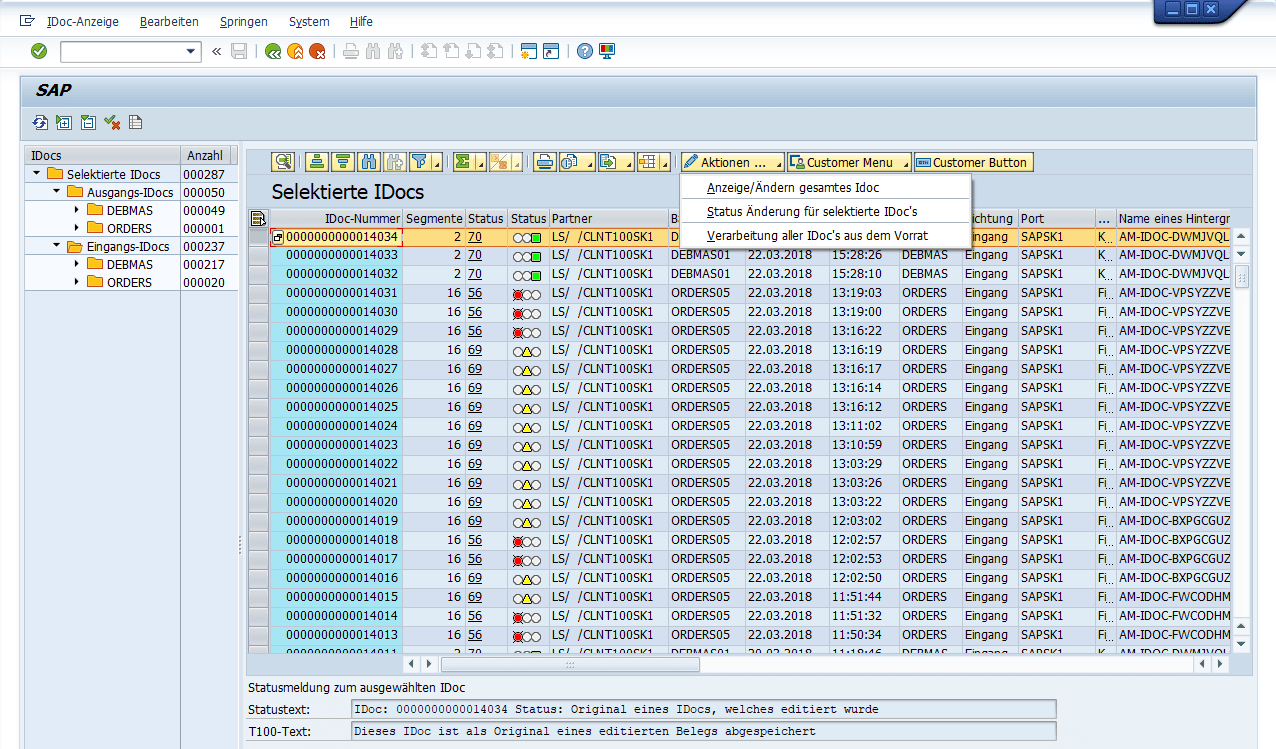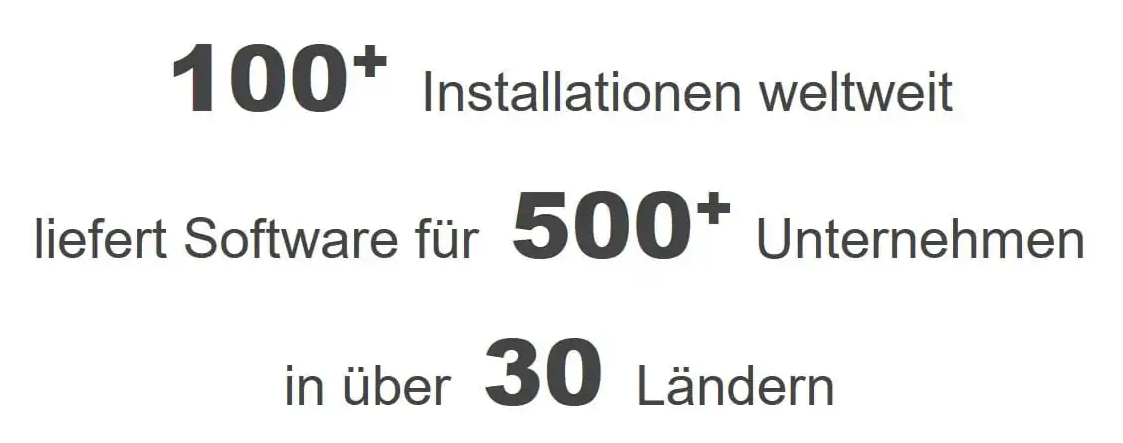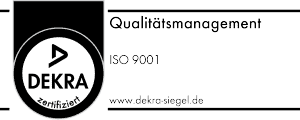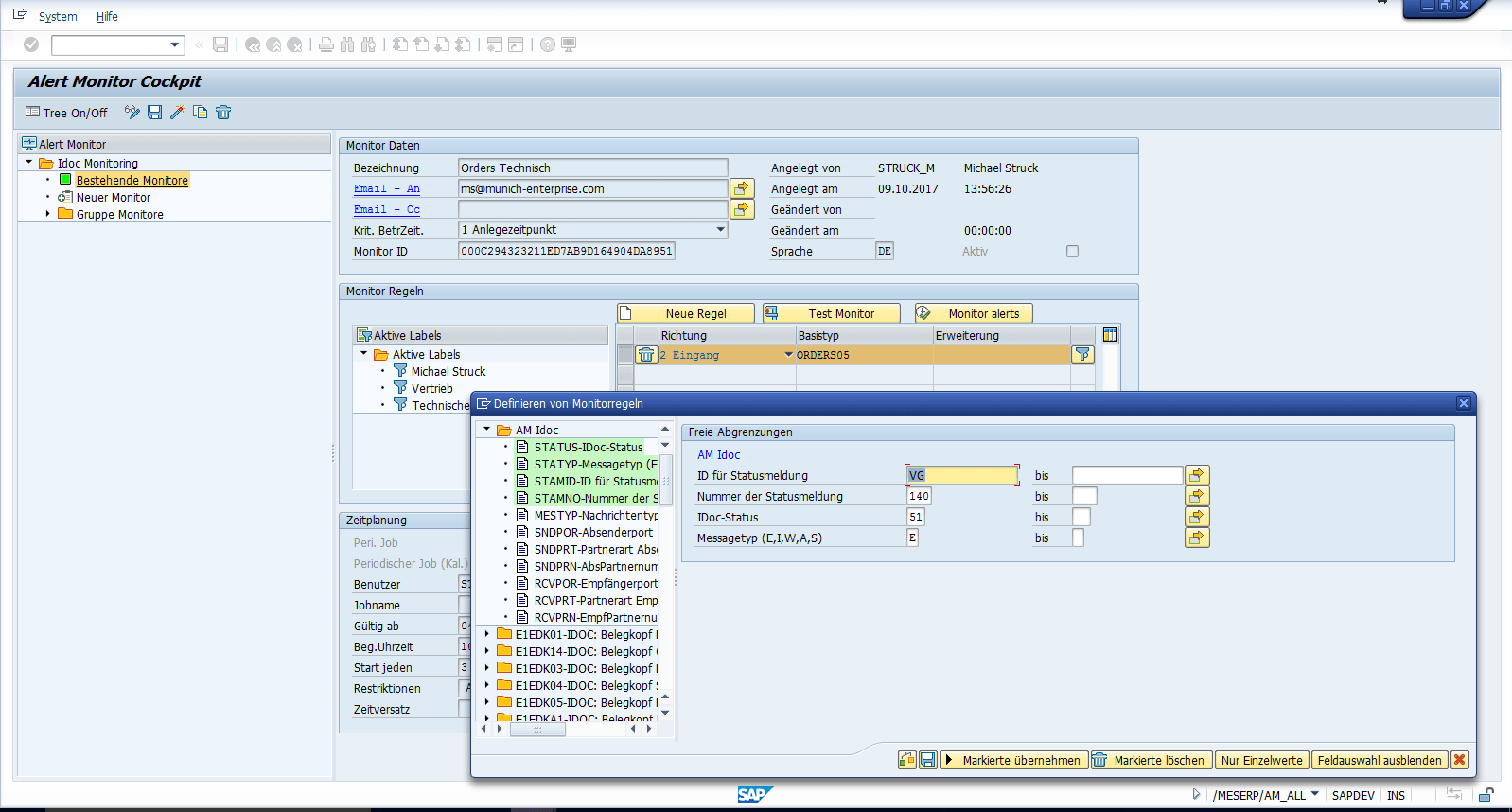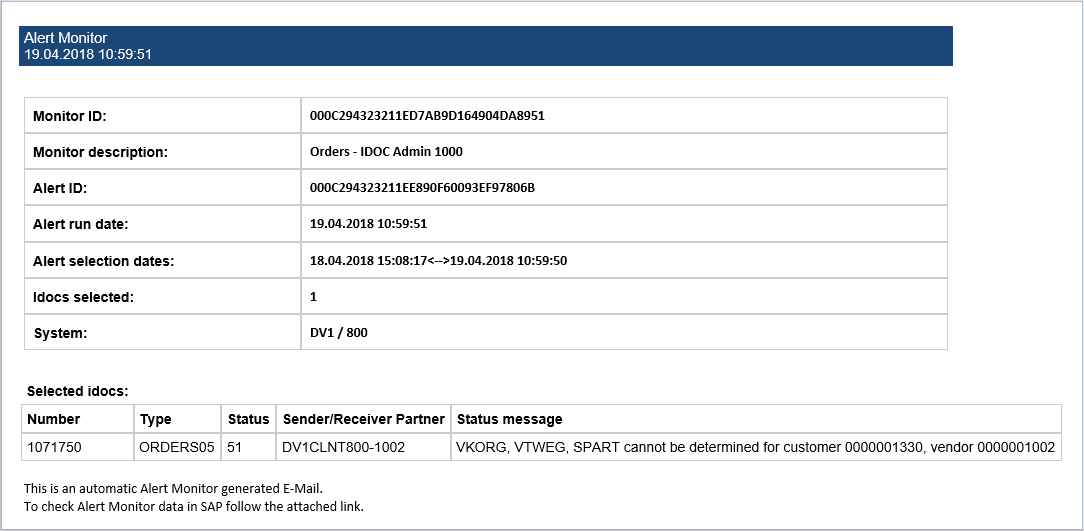SAP IDoc Monitoring is indispensable because IDocs are the central format for EDI data exchange with internal and external systems. They bundle data from application documents and master data, which are then sent to target systems. Conversely, SAP processes incoming IDocs, stores them in the system and automatically posts the relevant business data in the applications.
Typical errors in EDI data exchange
In practice, errors regularly occur during the processing of EDI processes. These lead to delays, interrupted business processes and high effort in correcting IDoc errors. Without targeted monitoring, valuable time passes before problems are detected and solved.
While the SAP standard provides transactions to monitor IDocs, detection and remediation is time-consuming and burdens both IT departments and business units.
Challenges in the SAP Standard
- Technical and content-related IDoc errors are difficult to detect in a timely manner
- High effort for EDI outgoing and incoming EDI monitoring
- Standard transactions (
WE02, WE05, BD87) are technically oriented and not very user-friendly
WLF_IDOC Insufficiently meets the requirements of IT and business departments- Displaying field names instead of business terms makes it difficult to use
- Error processing is cumbersome: many clicks, complex navigation, confusing interface
- Transaction
BD87 is too complicated for specialist departments because it is technically oriented
- High coordination effort in the event of content errors between IT, specialist departments and business partners
- Control is often in IT, although the department is responsible for content issues
These weaknesses can be eliminated with a specialized SAP IDoc monitoring tool: Errors are detected more quickly, EDI interfaces are efficiently monitored, and both IT and departments are relieved.








